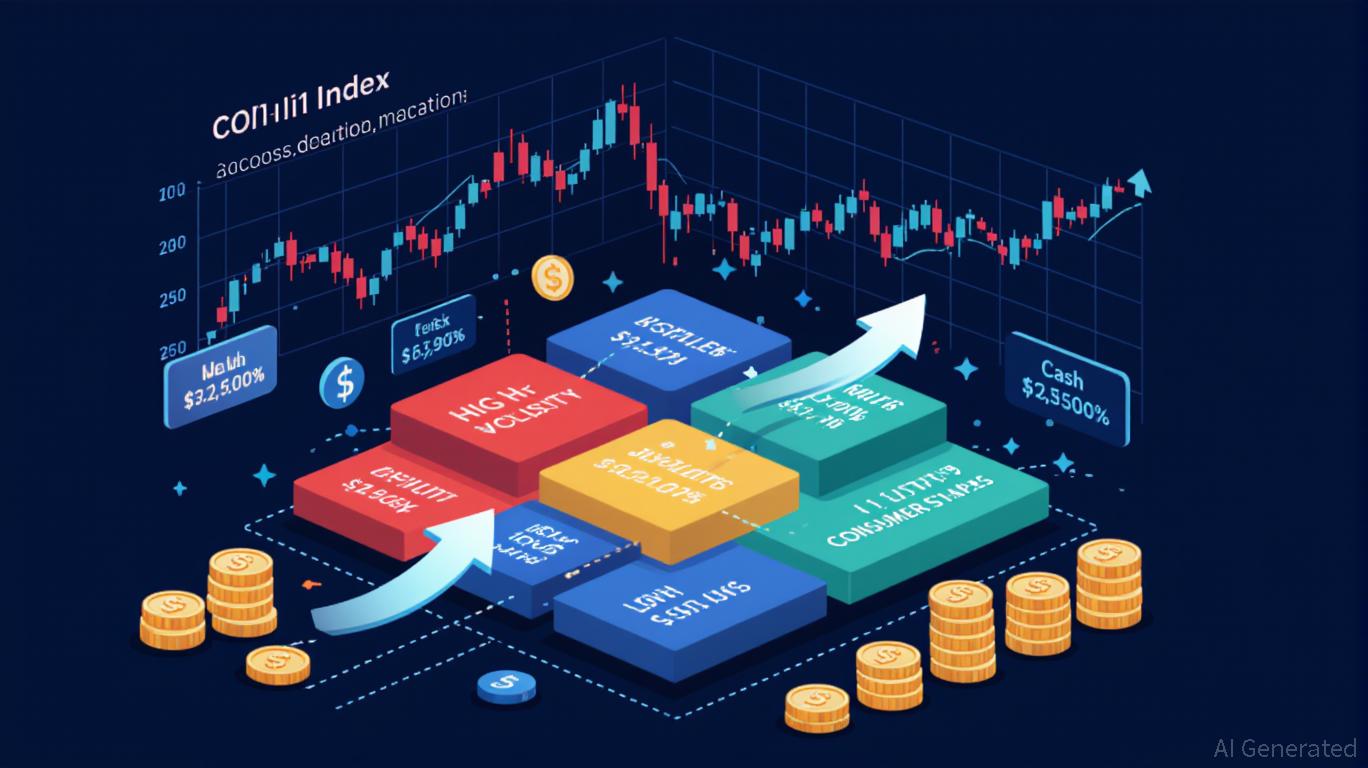CME Suspension: Global Market Vulnerabilities Revealed by Thermodynamic Constraints
- CME Group halted Globex trading on Nov 28, 2025 due to CyrusOne cooling system failure in Chicago, freezing 90% of global derivatives markets. - The outage caused erratic price swings in gold/silver and disrupted EBS forex platforms, exposing vulnerabilities in third-party data center reliance. - Despite post-holiday timing softening immediate impact, the incident highlighted systemic risks from thermodynamic limits in AI-era infrastructure. - CME faces pressure to build redundant systems as it expands c
CME Group Trading Halted by Data Center Cooling Breakdown
On November 28, 2025, CME Group—one of the globe’s leading derivatives exchanges—suddenly suspended trading on its Globex platform after a cooling malfunction at the CyrusOne data center in Chicago. This technical failure brought trading in futures and options for stocks, commodities, currencies, and digital assets such as Bitcoin and Ethereum to a standstill.
The disruption rippled through international markets, leaving traders without essential benchmarks for major indices like the S&P 500 and Nasdaq 100. Occurring just before 3:00 a.m. GMT, the incident highlighted how physical infrastructure vulnerabilities, rather than cyber threats or software errors, can jeopardize the stability of modern financial systems.
To protect its hardware, CME was forced to power down servers, effectively pausing 90% of global derivatives trading. This led to sudden and unpredictable price swings in key assets, including precious metals.

Gold experienced two rapid $40 sell-offs before rebounding, while silver dropped nearly $1 within minutes. Market participants described the event as a “nightmare,” noting that the outage intensified already thin liquidity following the Thanksgiving holiday and disrupted strategies for rolling positions. The incident also affected the EBS foreign exchange platform, halting updates for USD/EUR and USD/JPY pairs and causing bid-ask spreads to widen to twenty times their usual levels.
Underlying Vulnerabilities Exposed
This outage capped a turbulent year for CME. Despite achieving record crypto derivatives volumes—nearly 795,000 contracts traded in a single day on November 21, marking a 132% increase from the previous year—the event exposed the risks of depending on third-party data centers. CME had sold the affected facility to CyrusOne in 2016 and leased it back, a move critics say created a single point of failure.
Comparisons were drawn to a similar 2019 incident that halted trading for three hours, raising concerns about whether current cooling systems can handle the demands of AI-powered operations, which now account for 30% of annual U.S. energy consumption.
Market Impact and Future Challenges
Analysts observed that the outage’s timing—during a typically slow post-holiday period—helped limit its immediate effects. Jim Reid of Deutsche Bank remarked that the overnight disruption “hasn’t really been noticed” due to subdued trading volumes. Nevertheless, the event revealed systemic risks: a comparable failure during a period of high volatility could have far-reaching consequences across financial markets.
CME’s recent push into alternative cryptocurrency derivatives, including upcoming spot-quoted futures for XRP and Solana, adds further strain to its infrastructure.
Preparing for a More Demanding Future
Looking forward, CME faces increasing scrutiny to strengthen its systems. With plans to introduce round-the-clock crypto futures trading in early 2026, the recent cooling system breakdown highlights the urgent need for backup solutions and more distributed infrastructure. As global demand for data centers is expected to triple by 2030, financial firms must find ways to balance operational efficiency with robust resilience.
Despite these challenges, CME’s stock has climbed over 20% so far this year. Still, the incident serves as a powerful reminder that even the most advanced markets are not immune to the limitations of their physical environments.
Disclaimer: The content of this article solely reflects the author's opinion and does not represent the platform in any capacity. This article is not intended to serve as a reference for making investment decisions.
You may also like
Ethereum News Update: Avail’s Nexus Bridges Liquidity Across 12 Blockchains, Tackling Fragmentation
- Avail's Nexus Mainnet launches as a cross-chain execution layer unifying liquidity across 12 blockchains including Ethereum and BNB Chain. - The intent-solver architecture automates optimal routing while aggregating liquidity from multiple chains through Avail's data availability layer. - Developers gain simplified cross-chain integration via SDKs and APIs, enabling real-time collateral pools and intent-based trading without managing bridges. - With Solana integration planned and Infinity Blocks roadmap

Ethereum News Update: Ethereum Drives Institutional Transformation with Amundi Tokenizing Major Fund
- Amundi tokenizes a money market fund on Ethereum , signaling institutional adoption of blockchain-based asset management. - Ethereum's upgrades like PeerDAS and Bhutan's $970k ETH staking highlight growing institutional trust in its infrastructure. - CoinShares' $250M Bitcoin Miners ETF and global digital ID initiatives underscore tokenization's role in modernizing finance. - Ethereum's $3,100 price resistance and technical indicators suggest potential for long-term resilience amid scaling improvements.

Hyperliquid News Today: Hyperliquid Adopts Tidewater’s Strategy to Streamline Crypto Risk Management
- Hyperliquid introduces automated downsizing to stabilize HYPE, which dropped 52% from its peak. - Strategy mirrors Tidewater Renewables' capacity management, balancing short-term volatility with long-term stability. - Hyperliquid Strategies DAT plans $300M HYPE buybacks to inject liquidity and institutional-grade risk frameworks. - Market faces $1.89B+ liquidation risks if Bitcoin/Ethereum surge, prompting automated buffers to prevent cascading sell-offs. - Approach reflects growing DeFi adoption of algo
The Unexpected COAI Price Decline: Key Lessons for Investors from the November 2025 Market Turbulence
- COAI Index's 88% November 2025 collapse stemmed from C3.ai governance failures, regulatory ambiguity, and panic-driven herd behavior. - Market psychology amplified losses as investors overreacted to AI sector risks, ignoring fundamentals and triggering liquidity crises. - Diversification, cash reserves, and AI-driven tools helped mitigate risks, emphasizing long-term strategies over speculative hype. - The crisis exposed dangers of overreliance on AI/DeFi narratives, urging disciplined, diversified portf
